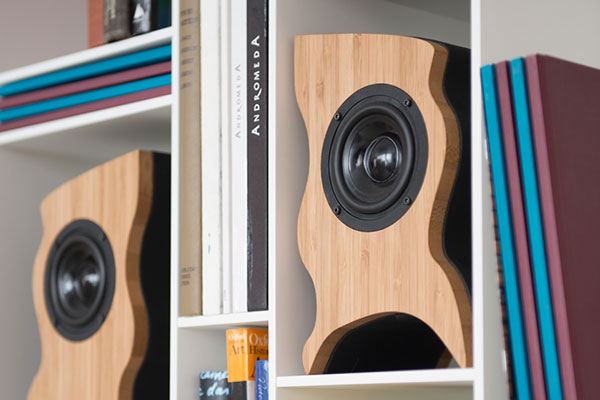Drivers
 It won’t be an exaggeration to say Serene Audio would have not existed if
it wasn’t for this driver. How would one start a whole business around a single component? and what's so special about it? You ask.
Because, drivers are the main ingredient in designing speakers. You can’t make good food with bad ingredients.
The same goes for speakers. Let’s see the 3 characteristics that makes them so good at what they do.
It won’t be an exaggeration to say Serene Audio would have not existed if
it wasn’t for this driver. How would one start a whole business around a single component? and what's so special about it? You ask.
Because, drivers are the main ingredient in designing speakers. You can’t make good food with bad ingredients.
The same goes for speakers. Let’s see the 3 characteristics that makes them so good at what they do.
1. Ultra low distortion
Due to their mechanical nature, drivers are usually the weakest link in the chain. No driver is perfectly linear. Non-linearities create unwanted harmonic and non-harmonic tones and cause uneven frequency response. We call these distortion. Distortions mask and alter the original sound. Ultimately, the amounts and types of distortions is what separates a great driver from the rest.
There are two important types of distortion that we measure. Harmonic Distortion and Intermodulation Distortion. Lets dive deeper, and see how our speakers stack up against the competition.
Harmonic Distortion
Figure 1 is a Total Harmonic Distortion (THD) plot. THD plots give a birds-eye view of distortion level. The plot below compares the THD levels of our speaker to B&W MM-1. The lower the better.
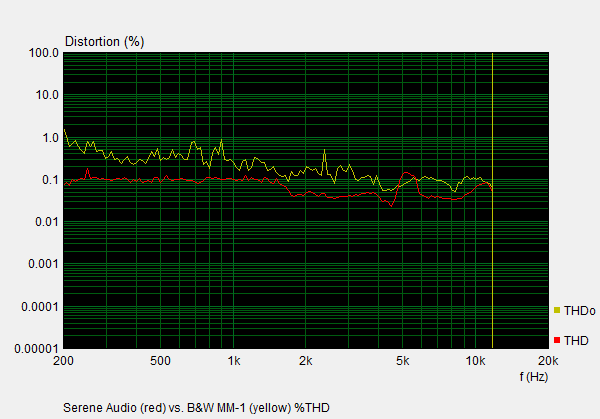
The most critical region for THD is from 200Hz to 3Khz, because above 3Khz the harmonics are high in frequency where our ears are not very sensitive. As you can see our speakers have a very low THD in that region; much lower than the MM-1.
Note: Many manufacturers of active speakers report the THD rating of their speakers' amplifier, not considering the drivers.
So you see a much lower number i.e. 0.01%. They do so, because amplifiers (having no mechanical parts) have much lower THD ratings
which makes their products look good on paper. This is deceiving and doesn't tell you much about the real performance of their speakers.
Intermodulation Distortion
Figure 2 is three intermodulation distortion (IMD) plots side by side. Each speakers has two sine tones at its input at 1800hz and 2000hz. A perfect speaker would generate only those two tones. But as you can see real speakers generate additional tones on each side of original tones. Because the tones that are generated are not harmonically related to input, IMD is even more irritating to the ears than THD.
You can see our speakers(center) have lower IMD levels than both Bose Companion 20(right) and B&W MM-1(left)
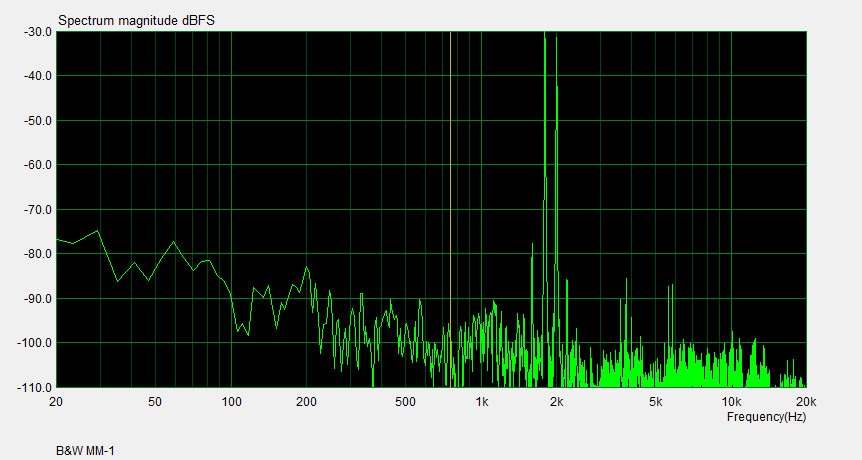
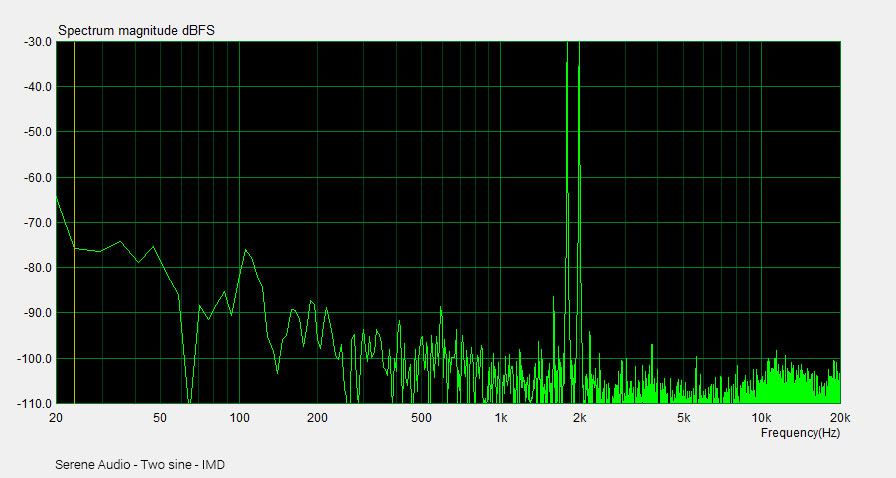
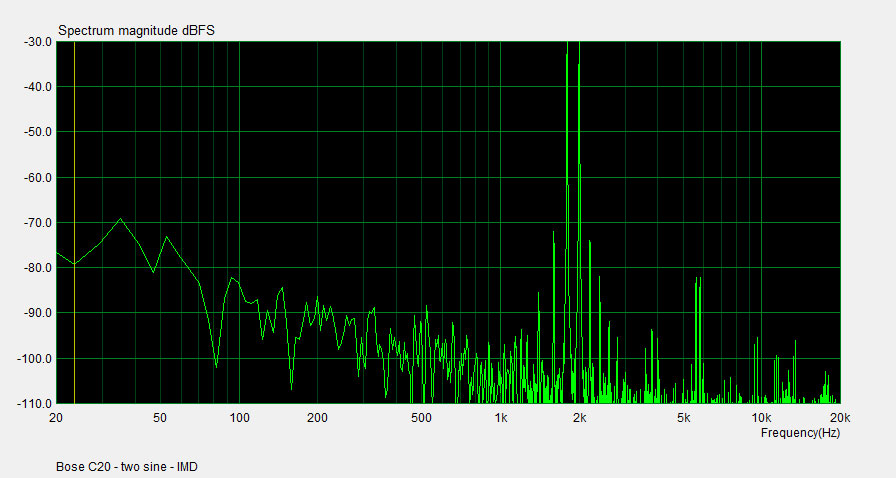
Our drivers achieve this level distortion by:
-
Shorting copper cap on the pole piece of the magnet assembly
Very powerful magnet
precise manufacturing that places the voice coil at the center of magnetic gap with high accuracy.
Now it's not all moonlight and roses. Like every engineering problem there are compromises. It's how wise those compromises are that determines the quality of the final product. In order for our drivers to have this low level of distortion, the thing that was sacrificed was sensitivity. Meaning, they would need more power to generated the same level of sound than a more sensitive driver would. But hey we designed our amplifiers to provide that power without breaking a sweat.
2. Long excursion
Deep honest bass. Most small speakers generate pseudo bass using signal processing techniques. Most prominent one is explained here in detail. We feel these are gimmicky and as shown by the paper referenced earlier, they don’t result in a better perceived sound quality. Our speakers don't generate earth-shattering bass, and that's why they have a subwoofer output. However, long excursion of our drivers allows them to generate real bass that's impressive for their size without resorting to gimmicky signal processing techniques that muddy the sound. In the Enclosure section, you'll see how we are leveraging long excursion capability of the driver to achieve deep bass.
3. Great imaging and fast transient response
As you might have noticed, our speakers use a single driver rather than a more common 2-way woofer-tweeter design. This design results in a more coherent sound that is projected evenly in space creating an immersive sound field. Our drivers also have a small moving mass, as a result they are very fast when it comes to rendering transient attacks.


